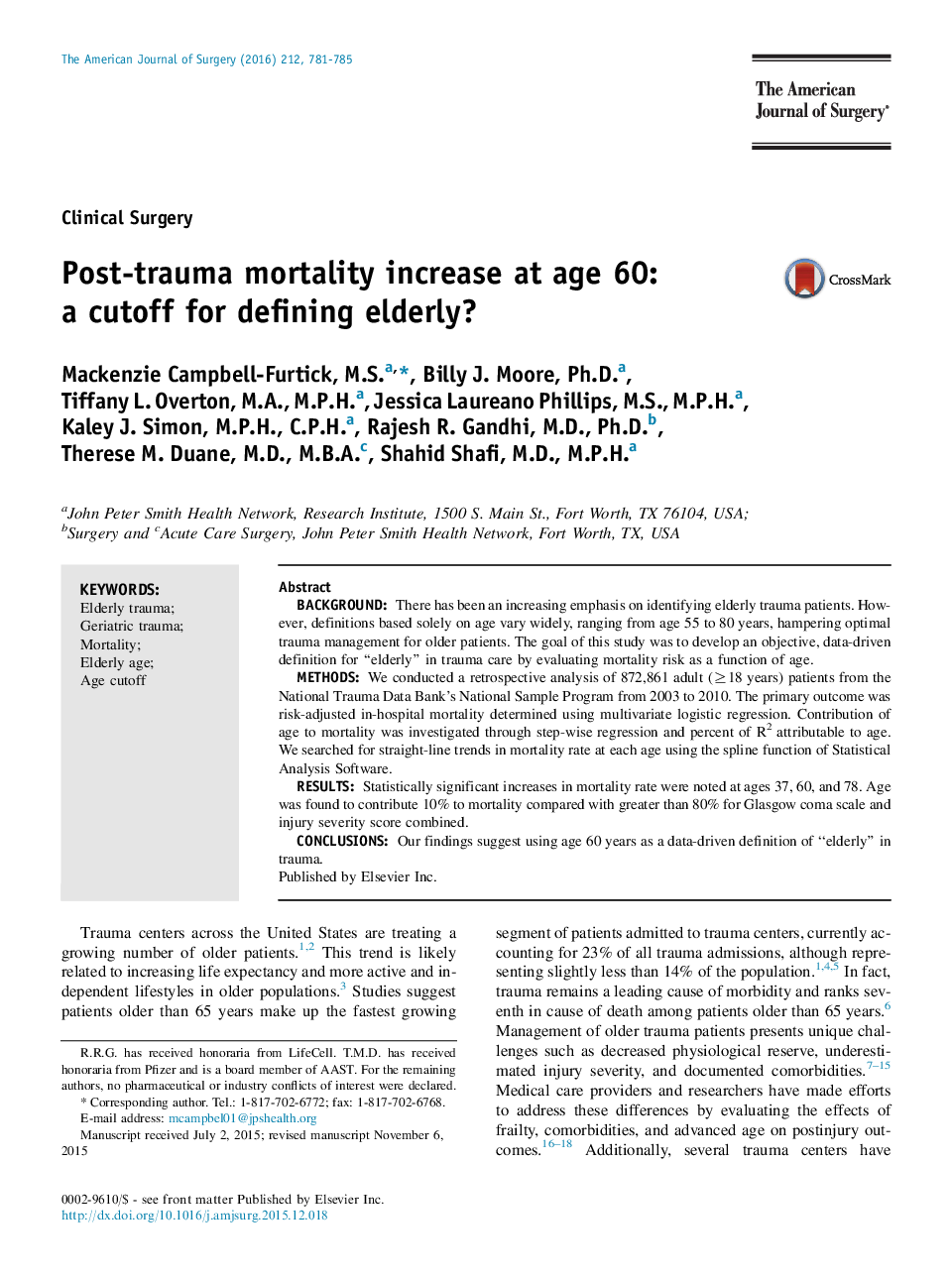| Article ID | Journal | Published Year | Pages | File Type |
|---|---|---|---|---|
| 4278070 | The American Journal of Surgery | 2016 | 5 Pages |
•National Trauma Data Bank patients were analyzed to identify “elderly” age.•We examined the association of age and mortality to identify age cut points.•Three cut points were identified and age 60 years was most significant.•Age 60 years is recommended to define “elderly” in trauma.
BackgroundThere has been an increasing emphasis on identifying elderly trauma patients. However, definitions based solely on age vary widely, ranging from age 55 to 80 years, hampering optimal trauma management for older patients. The goal of this study was to develop an objective, data-driven definition for “elderly” in trauma care by evaluating mortality risk as a function of age.MethodsWe conducted a retrospective analysis of 872,861 adult (≥18 years) patients from the National Trauma Data Bank's National Sample Program from 2003 to 2010. The primary outcome was risk-adjusted in-hospital mortality determined using multivariate logistic regression. Contribution of age to mortality was investigated through step-wise regression and percent of R2 attributable to age. We searched for straight-line trends in mortality rate at each age using the spline function of Statistical Analysis Software.ResultsStatistically significant increases in mortality rate were noted at ages 37, 60, and 78. Age was found to contribute 10% to mortality compared with greater than 80% for Glasgow coma scale and injury severity score combined.ConclusionsOur findings suggest using age 60 years as a data-driven definition of “elderly” in trauma.
